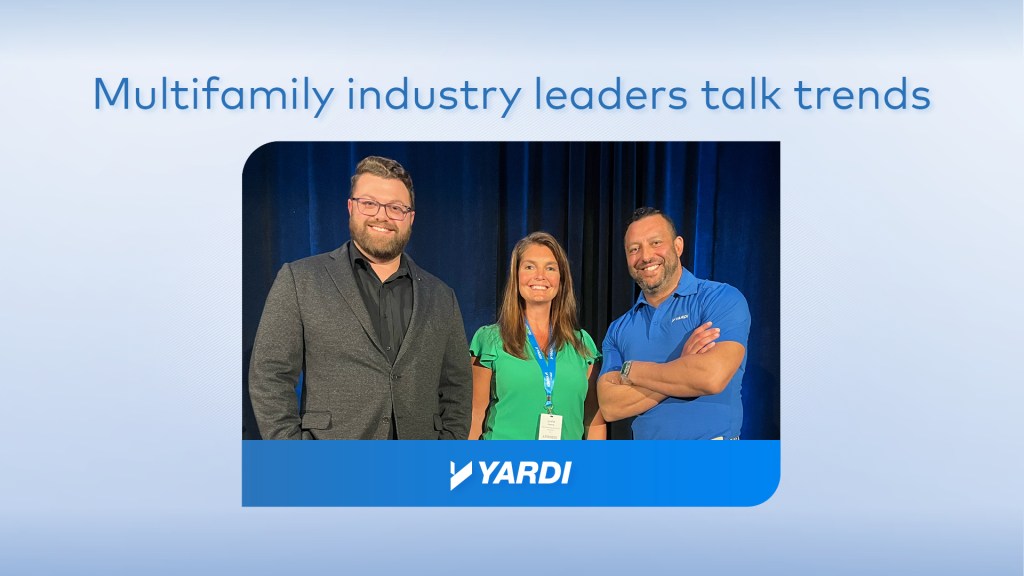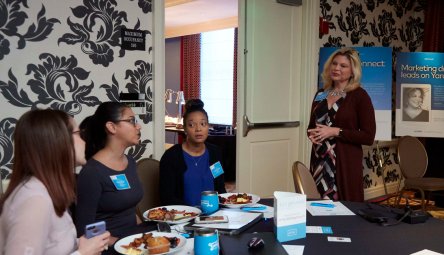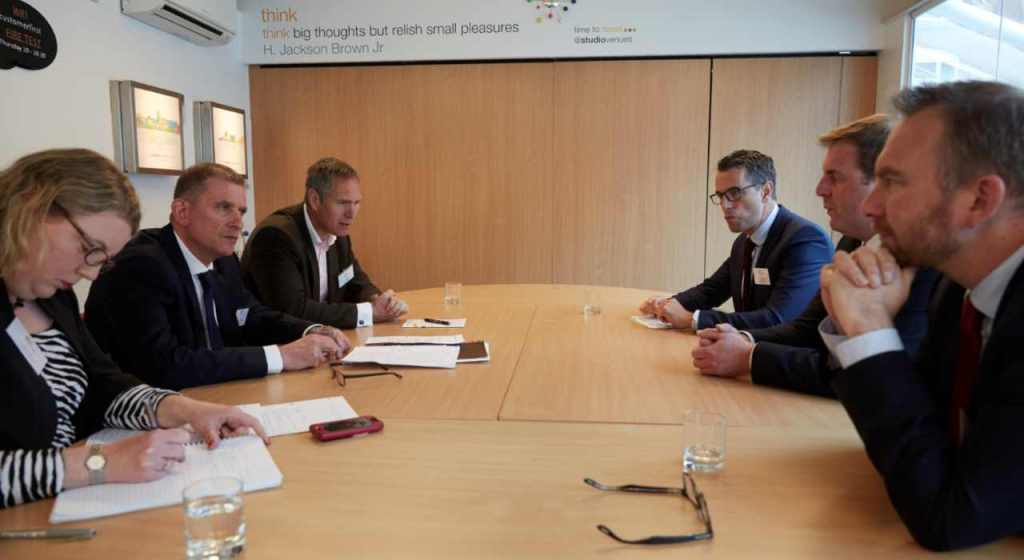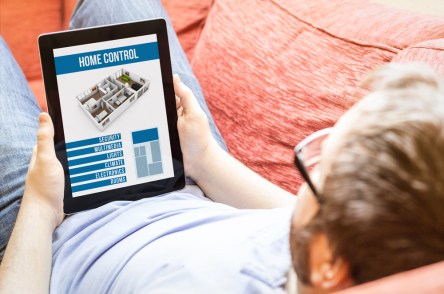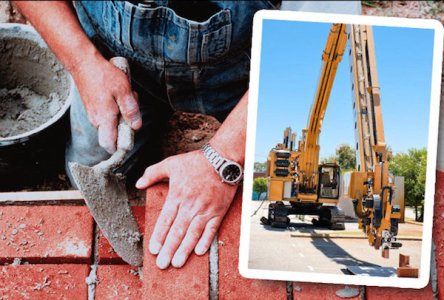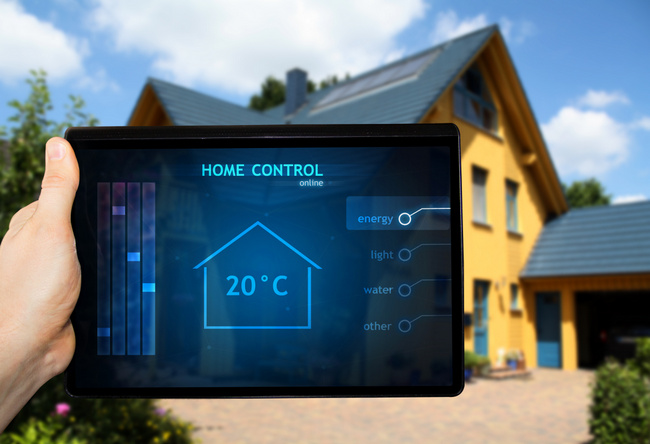At the 2023 Yardi Advanced Solutions Conference, Director of Sales Nima Farkhak led a panel with leading multifamily figures about trends impacting the industry — and the tech they’re using to get ahead. The conversation revolved around automation, fraud prevention and training. Particularly, how can multifamily organizations receive more employee buy-in when implementing new technology, and leverage that technology to maximize support for their employees? Panelists (pictured, right) included Leslie Henry, SVP of strategic solutions and development at Towne Properties and Josh Draughn, head of marketing at Weidner Apartment Homes. Read on for key takeaways. Automating early touchpoints significantly reduces site teams’ workloads Most multifamily operators agree that strategic automation is key to efficiency, resulting in streamlined workloads, satisfied employees and happier residents. “Automation is all about how we can give back valuable time to our associates, and we’ve found Chat IQ to be extremely helpful with that,” said Draughn. “Instant gratification is now expected, so our first automated engagement starts just five minutes after an initial contact. Then Chat IQ transitions the interaction to texting, which results in a faster response time.” Since implementing automation and Chat IQ, Draughn says that Weidner experienced a 15 percent reduction in advertising costs year over year. Transparent communication is key to achieving employee buy-in But there are challenges with implementing automation, artificial intelligence and new technology in general — especially when it comes to employee buy-in. Henry noted that most of Towne’s employees have been with the company for a long time and were opposed to change — until they saw its benefits firsthand. “After we implemented Chat IQ,” Henry said, “Our site teams quickly realized how useful it was in gaining back time. They love how it filtered out less promising leads in the beginning. But we also took their feedback if they didn’t like the way the bot was responding. We let them customize some aspects of the responses so there was more of a personal human touch.” Draughn agreed. “Getting buy-in at first will always be challenging,” he said. “But it’s all about how you communicate new changes and listen to their feedback. The human element in multifamily is always going to stay.” Deterring fraud with automation Multifamily organizations are also relying on technology to vet applicants more than ever. ID Verify uses facial recognition technology to confirm applicant identities. To do this, applicants take a selfie during the screening process, which is then matched with the official documents they submit. “Accuracy is one of the biggest benefits of automating the identity and income verification process,” Henry said, adding that automated technology has acted as a fraud deterrent, saving Towne thousands of dollars in the process. “In the beginning, I thought we were losing rentals,” Henry said. “But when we looked closer, it was because some IDs were so clearly fraudulent that the system weeded them out instantly. It saved us from dealing with them, them potentially living with us and us incurring bad debt.” Draughn agreed, noting that while there may be steps like taking selfies, genuine prospects will still follow through with the application. This allows leasing teams to avoid guesswork or repetitive communications. Streamlining online training As the pandemic shifted training methods from in-person to online, Towne Properties also turned to the learning management system Aspire for online training. “We’re learning about the product faster and it’s easier for us to train new employees,” Henry said, highlighting the ease brought by Aspire’s full integration with Towne’s solutions. “It feels good knowing that anyone can learn at their own pace with Aspire.” See it in action A connected solution can help you drive efficiency at every stage of your workflow, enhancing data connectivity and eliminating gaps. Want to see what this looks like in action? Watch a webinar to see how Yardi helps you streamline workflows, reduce fraud and enhance...
Admissions Automation
Ditch paperwork, improve sales
With senior housing occupancy at its lowest level since 2010, attracting new residents to your community can be challenging. Staff must work harder than ever to get prospects into the pipeline—but getting seniors in the door is just the first step for your sales team. They call it the sales process for good reason. Moving senior living prospects through the funnel and closing the deal requires, on average, 25 contacts—calls, emails, appointments, tours—over the course of two years. Conversion is a marathon, not a sprint. And as many salespeople will tell you: a lot can happen during those weeks and months leading up to a signed lease. Prospects can change their minds, become frustrated or disinterested, or find another community or course of care, among other things. How can sales teams mitigate prospect fallout and increase conversion? Shorten and simplify the sales cycle. One way to do that is using automation to reduce paperwork and streamline the closing process. Because when so much effort goes into the pipeline, dealing with fall through in the final stages is not only heartbreaking, but also costly to the business. That’s why 68% of best-in-class sales teams have made the switch to electronic signatures to improve the customer experience and close deals faster. In fact, companies who use automation tools like e-signatures during the admissions process are 18% more likely to shorten their sales cycles. According to an IDC white paper on bridging the document disconnect in sales, there are plenty of opportunities for companies to impact their sales process by going paperless. Here are a few ways automation in the sales process can benefit your business: Increase staff efficiency Salespeople spend more than 36% of their time on administrative tasks—and less than two thirds of their time on their core job function: completing the sale. If that’s not concerning enough, consider that 43% of office staff say they need to use several disconnected systems and often have to copy and paste or rekey information, an error-prone and time-consuming process. Employing automation, like templatized electronic leases and e-signatures, during the sales cycle not only takes the guesswork out of document generation, it eliminates the frustrating use of disparate systems that draws out the closing process. Build prospect rapport The typical senior living community receives 31 new inquiries per month. That’s a lot of prospects to keep track of week-over-week, all year long. Fostering a positive relationship with a would-be resident is critical to winning their business. Automating the capture of information as a step in the sales cycle not only ensures that personal details are collected, it guarantees they’re retained and visible to the entire sales team. Reduce errors We love office supplies as much as the next person, but those little “sign here” sticky arrows aren’t doing your community any favors. Consider that 36% of sales leaders say agreements are missing signatures or dates—or have been signed by the wrong person altogether—and another 51% say that documents are often misfiled or lost. Systematized residency agreements and e-signatures, like those found in Yardi Senior CRM, eliminate paperwork and reduce the disorganization and disarray that come along with paper records, curtailing costly mistakes and missed opportunities. Optimize customer experience 40% of front office staff say the documents they send to prospects don’t always display or print correctly, and 38% say recipients sometimes can’t even open them. Imagine a lengthy sales process involving emails and call follow-up, meetings and tours, family visits and stacks of paperwork—and all that’s left between you and closing the deal is a required signature on the lease. You’ve completed the document, crossed all the t’s and dotted the i’s, and sent it to the prospect to print and sign, only to find out that the images won’t render, and the lease cannot be inked. A deal that was all but done is now in limbo, and you’ve left your prospective resident with...
Paperless Perks
LumaCorp loves Procure to Pay
Are you feeling energized for 2018? It’s a new year, bringing fresh challenges and opportunities. And while every January can inspire a list of resolutions, for every real estate business one goal is likely to top the list year after year: reduce costs. When it comes to lowering operational expenses, going paperless for as many tasks as possible is smart. And here’s some great news: it’s easier to do than you might think, and the benefits are big. For Dallas-based apartment manager LumaCorp, centralizing and automating procurement and payables processing on its mobile Yardi property management platform using Yardi Procure to Pay has not only reduced costs for the company, but also saves its staff valuable time (in addition to sparing more than a few trees). And in just three months, by eliminating the cost of transporting invoices by courier, Procure to Pay paid for itself. Better Buying and Bigger Discounts LumaCorp manages 24 apartment communities with more than 6,000 units. According to Larry Orth, LumaCorp’s controller, the company’s maintenance, repair and operating supply costs fell by 4 percent the first year after adopting Yardi Procure to Pay, an end-to-end, paperless procurement and invoice processing system that’s part of the Yardi Multifamily Suite full-business platform. Orth said, “For me, the great thing about it is the time efficiency, both at the properties and in the accounting department. We are a full service Procure to Pay client, so the processing is handled by Yardi, which takes a lot off our onsite people’s hands. All told, Procure to Pay has reduced by up to 40 percent the time our team spends on the payables process. And it’s a paperless system, which obviously also benefits the environment.” LumaCorp has also gained savings from the negotiated pricing across...
Marketing Automation
Simple, Efficient, Smart
To stay competitive, your properties and services must remain in the forefront of the digital marketplace. From a prospect’s search to a resident’s lease renewal, marketing automation can help you exceed renters’ expectations. Marketing automation streamlines repetitive tasks, follows user behavior and delivers targeted content. Such content ushers customers into your leasing pipeline and then helps you keep them as loyal residents. Watch a quick video about marketing automation. In a recent post, we interviewed Esther Bonardi, vice president of marketing at Yardi. She explains the long-term benefits of automated marketing. “Attracting a new resident costs up to five times more than retaining an existing one,” explained Bonardi. “With automation tools designed to check in with residents, conduct surveys, provide contact support and offer timed renewal savings, both your retention rates and your bottom line will improve… automatically!” Learn to automate your marketing for an improved leads-to-leases experience! Below are just a few proven strategies for marketing automation. Nudge Marketing Nudge marketing is a website-based tool that tracks visitor behavior. You can use the tool to deliver targeted content to website visitors based on their actions. You can share a promotion with first-time visitors or prompt visitors to schedule an appointment after viewing floor plans. You control the content and the corresponding user behavior. Intelligent Text Response Text is the latest and greatest in rapid communication for businesses. Provide prospects with customized, automated responses that answer their questions without consuming leasing agents’ time. If a prospect wants to know more about outdoor living space, your automated response can give the square footage of the property’s decks. You can also use the service to send a link to available units. Timed Lease Renewals Increase resident retention and improve forecasted revenue with automated lease renewals. Send...
Ecoluxury
From Trend to Industry Standard
Modern renters gravitate towards housing that allows them to protect natural resources without sacrificing convenience. Increasing demand has paved the way for sustainable features to shift from ecoluxury to affordable communities. Luxury is not a term for opulence. Rather, the phrase reflects the Latin luxus, which denotes something that is precious and of optimal caliber. The ecoluxury lifestyle and products signify the value of our environment and the high quality of the products used to protect it. Joyce Mihalik, Vice President, Integrative Design, Forest City Realty Trust, defines ecoluxury as “seamless elegance embedded with sustainable design that gives the tenant a luxurious experience.” Sustainable features must blend with convenience, functionality, and style. Ecoluxury appeals across demographic boundaries. “If you can afford it, you will want it,” Mihalik casually says. The trending products below reappear in ecoluxury communities throughout the United States. As demand rises and pricing becomes more competitive, these features will appear more frequently in market rate and affordable communities. Home Automation Devices GID Investment Advisers, and its property management company Windsor Communities, is a national leader in green multifamily properties. With 11 green certified buildings and nine additional properties in the certification process, the Boston-based company takes pride in its ecoluxury residences. Matthew Bernstein, Asset Manager, GID Investment Advisers, notes the growing popularity of smart home devices, “Home automation will continue to grow, offering new opportunities for residents to enjoy smart homes.” Home automation devices allow renters to remotely control thermostats, fixtures, appliances, and even outlets through the use of a mobile device. GID’s Los Angeles property, Hanover Olympic, offers 20 Eco-green units. Each unit is equipped with a Google Nest Thermostat. After one week of use, Nest learns the preferences of inhabitants. The device then automatically adjusts interior temperatures to account...
Marketing Automation
Makes a Big Impact
Today’s renters expect to be able to find and interact with your company everywhere, all the time. But does that mean you’re suddenly able to hire more staff for around the clock support? Of course not. Marketing automation is your secret weapon in an increasingly busy digital marketplace. Marketing automation streamlines repetitive tasks, follows user behavior and delivers targeted content to get customers into your leasing pipeline and help you keep them as loyal residents once they’ve moved in. It drives efficiency for the marketer and leasing manager while creating a more personalized experience for the customer. Watch a quick video about marketing automation. We talked with Esther Bonardi, vice president of marketing here at Yardi, for her perspective on the evolution of property marketing technology. “Property marketers have to constantly innovate to keep pace with consumer trends and demands,” said Bonardi. “Marketing automation is one way even smaller marketing teams can do that and have a big impact without breaking the bank.” 3 Ways Marketing Automation Is Changing Property Marketing Larger Reach Marketing automation tools like ILS data syndication and social media bulk posting help property marketers reach a larger audience with less effort. Instead of manually entering details like vacancy information, pricing, policies and contact information repeatedly – increasing the likelihood of human error each time – internet listings can be automatically and accurately updated across multiple sites with information from your property management software. Social media posts can be created just once and then scheduled and shared across popular platforms like Facebook and Twitter. Reach thousands of viewers each week without sucking time out of every work day. Better Service Bonardi points out that marketing automation isn’t just a way to work faster, it’s a way to market more effectively. “Marketing...
Tech + Logistics
Great Britain Automation Outlook
The rise of ecommerce has revolutionised the way we shop – but it has also transformed property logistics. Technology is helping retailers and carriers to manage stock movements, in-store click & collect and home deliveries, but it is also a costly investment. Who will pick up the tab? How are developers, investors, distributors and occupiers using ‘smart logistics’ to serve their customers? Yardi brought together a panel of thought leaders in a roundtable at Property Week’s Sheds Conference in Birmingham. The panel: Paul Crosbie, investment manager, M&G Real Estate Jonathan Gardner, head of asset management, Delin Capital Nick Kay, development director, St Modwen Properties Len Rosso, head of industrial and logistics, Colliers International Charles Spicer, Midlands industrial and logistics director, Savills Claer Barrett, personal finance editor, Financial Times (chair) CB: What do you all think the ‘shed of the future’ will look like? How will the needs of occupiers change over the next five years? LR: I don’t think we should call logistics space ‘sheds’ anymore. It is a much more technologically advanced product than the name suggests. Drones, robots and automation are all on the horizon, but I think the biggest change we’re seeing right now is higher eaves heights and mezzanine floors. Occupiers want to use all the space they’re paying for – not just the ground floor. PC: People are getting very excited about drone deliveries, but they are more likely to be used for rural areas rather than built-up urban locations where their use will be more restricted. JG: Occupiers will still be using vans and lorries, charge can bypass the 200-mile mark, it will really make a change to the use of this technology. NK: And look at the activity going on inside the shed. The rise of the ‘sharing economy’ is a big trend. We’ve seen Airbnb; now there’s a similar business called ZupplyChain for third- party logistics [3PL] companies with excess space to lease it out. If you can find space in areas of undersupply, it would make the market more fluid and ease the supply crunch. CS: The shed of the future won’t be one size fits all. Our market is very varied and diverse – so a manufacturer’s requirements are very different to that of a pure logistics operator. That said, we’re already seeing multi-level facilities and in the future we could well see subterranean ‘sheds’ in high-density urban areas. At the Property Week Sheds Conference, we’ve just heard a number of occupiers say they would not be averse to the idea of sharing space in the future so I anticipate more multi-user facilities as is commonplace in mainland Europe. There are covenant and lease issues but nothing that is insurmountable. We may see a company that is institutionally acceptable taking a ‘master lease’ and then space split between multiple users and companies in a Regus-type model. CB: As investors, how happy would you be with the idea of a shared shed? PC: A facility shared by a number of operators would be interesting if there was an overriding lease. It could give investors more comfort if there was some diversity alongside the main tenant. LR: DHL has been talking about that model for the past five years, but it hasn’t happened yet. JG: Well, it has happened in mainland Europe. 3PLs want to match their lease lengths with their contract terms. If they have a three-year contract, they don’t want to take a five-year lease. However, this comes at a cost – they accept they will have to pay a much higher rent in some locations. Other 3PLs will take a big lease and will stack the space with three or four different customers’ kit. Even then, there could be quite tough conditions to meet, such as 50% of the space being occupied by one client for the full length of the lease. PC: I agree that the sheds –...
Help Wanted
Addressing An Aging Workforce
Born between 1981 and 1998, Millennials currently make up a third of the US workforce, but those numbers will need to rise exponentially in order to meet demand. According to the United Nations, the world’s advanced economies are experiencing a rapid decline in working-age population. The UN projects the available workforce to decrease by 5% within the next three years. That decrease is due primarily to aging of the current labor force, which creates an additional burden for country’s with wage-based entitlement programs like social security. As the number of recipients for these programs increase, the workforce contributions struggle to bridge the gap. In 1945, the ratio of workers to retirees was 41.9 to one. By 2010, that number had dropped to 2.9, with the number expected to drop to 2-to-1 by 2030. Ebbs and Flows As the Baby Boomer juggernaut moved from childhood to young adulthood, lower birthrates followed in their shadow. For years, there’s been growing concern over what would happen once the boomer generation hit retirement. The smaller Gen X demographic averaged a mere 3.4 million births per year – or 65 million total – not enough to supplement the 76 million boomers born between 1946 and 1964. Now it appears the tides are shifting. Sometime in April of last year, the U.S. population reached a significant milestone. For the first time in over fifty years, Baby Boomers no longer claimed the biggest portion of the country’s population. Hitting a high of 75.4 million, Millennials edged out the estimated 74.9 boomers to seize the crown. The Millennial population is expected to peak at 81.1 million by 2036 while the Boomers will shrink to 16.6 million by 2050. Shrinking Workforce With 83 million potential workers, the Millennials appear to be just what...
Embracing Tech
Attract + Retain Residents
Renters of all ages have rising expectations for technology features in their rentals. While splurging on gadgets would certainly catch your prospects’ attention, that approach isn’t the most budget-friendly. You’ll want features that offer the biggest bang for your buck! We’ve evaluated a few tech toys that combine resident appeal, utility, and longevity. USB Compatible Outlets These little guys allow residents to charge phones, tablets, and other mobile devices without displacing lamps and small appliances. Installing USB compatible outlets can offer significant savings for older properties, which often lack the quantity of outlets available in newer properties. Residents will need fewer extension cords and power strips, which reduces the risk of hazardous overloads and costly fires. USB outlets are affordably priced and can be installed in less than ten minutes. With so many USB-reliant devices, they are unlikely to become outdated soon, making them a terrific investment. Home Automation Home automation wins over the hearts of many: tech gurus love controlling their homes from their tablets; those who love to save savor the $180 savings per year thanks to a remotely programmable thermostat; tenants who enjoy convenience appreciate starting the coffee maker from bed or turning off the iron once they’ve left the house; renters who are concerned with safety rely on Bluetooth-controlled locks that regulate access to their home using customizable codes. Most renters can find something to appreciate about home automation, which gives your property a competitive edge over properties without it. The downside is that home automation technology can be costly to install and maintain. Depending on the features, home automation systems can cost upwards of $1,000 per unit. More advanced systems also require additional labor and time costs; there is very little research to depict the ROI in multifamily installations...
Masonry Goes Modern
Robotic Brick Layer
There is one thing the Egyptian Pyramids, Rome’s Colosseum, India’s Taj Mahal, and the Great Wall of China have in common: masonry. All these astonishing architectural achievements, scattered all over the globe, share the same building technique chosen for its beauty, versatility, and durability. The level of complexity varies from simple masonry to ornate exteriors or high-rise buildings. After more than 6000 years, masonry is still used today. Just go down the street and look around at the office buildings, schools, houses, or patios and you’ll see some form of masonry. Traditional builders are convinced that regardless of the material used – whether it is brick, block, tile, terra-cotta, or stone – the skill and precision of the mason can never be replaced by machines. One Australian engineer presented a robot that wants to prove otherwise. Fastbrick Robotics has finished developing the robot named Hadrian (after the ancient Roman emperor Hadrian, who had a thing for construction and ordered the building of Great Britain’s famous Hadrian’s Wall). It took the engineers ten years and $7 million spent in research and development to bring Hadrian to life. Even though the robot is still in the prototype stage, Mike Pivac, an aeronautical and mechanical engineer, and the CEO of Fastbrick Robotics, hopes to bring the commercial machine onto the market within the next couple of years. Hadrian is able to handle, process, and lay 1,000 bricks an hour, work 24/7, and complete the shell of a brick house in just two days. This means 150 homes a year! Here is god to know that a standard house takes around 15,000 bricks to develop, and about six weeks to complete through the traditional method. The first step in putting Hadrian to work is creating the layout of...
Wired Home
The Rise of Automation
Imagine driving up to your house after a long day of work. The garage door opens without touching a button. The front door unlocks – no need to fumble around for your keys – and the lights flip on. Your TV tunes to your favorite channel before you even take off your coat. Is this a dream? No. Welcome to your automated home. Home Automation Past & Present Home automation became accessible in the late 1970’s when X10 technology was made available to the American public. X10 modules allow compatible electronics to communicate via existing power lines in a house. Although X10 is relatively affordable, it is also somewhat complicated and time consuming to install. Home automation in the early days largely remained the pursuit of techy hobbyists and wealthy homeowners. Today’s widespread smartphone and tablet technology has now opened up home automation to a broader audience. Some companies are offering devices that allow users to control a single function wirelessly or automate it all together. The Nest Learning Thermostat is a smart thermostat that connects to Wi-Fi, allowing it to be controlled remotely using a mobile app. You can adjust the temperature of your home from anywhere. Additionally, Nest learns your climate preferences and creates a schedule that optimizes your energy use. Nest even knows when you’re out of the house and self-adjusts to save power. Other forward-thinking businesses are offering more comprehensive home automation services. Comcast, a national media and technology company, touts their XFINITY® Home package as “the total home security and home control solution that keeps you connected to what matters most.” For less than $50 a month, XFINITY® Home allows you to control your security system, adjust your lighting and access your thermostat from your smartphone, tablet or computer. Better still, you can program integrated automated systems to work together. For example you can tell your home to turn down the heat when you arm the alarm, giving you one less thing to worry about when you walk out the door in the morning. Automation Benefits for Tenants & Landlords Home automation isn’t just a good idea, it’s also a green idea. Automation yields multiple benefits, chief among them being the energy efficiency that comes with having a well-regulated HVAC system. Studies show that building automation can result in consistent energy savings between 5% and 15%. Boost savings by adding automated occupancy sensors to switch off appliances that have accidentally been left on to reduce unintentional energy usage. Additional benefits of home automation include convenience, peace of mind and ease. You can manage your home from anywhere, check your security feed at any time and turn on the lights from your iPad without having to bump around in the dark. There is even home automation technology that will help you take care of your pet. Home automation is more than just a passing trend. It’s the future of real estate. A recent Better Homes and Gardens Real Estate survey revealed that 41% of Millennials would be more likely to brag to a friend about a home automation system than a renovated kitchen. Residential complexes can enjoy significant energy savings and other perks from automation. Automated units are in demand and can be marketed as “smart homes” that enjoy technologically advanced features and added security. In fact, the value of the smart home market is estimated to climb to $60 billion by the year 2017. Home automation “future proofs” your properties, ensuring a steadily increasing listing value for years to come. Ready to try your hand at a little recreational home automation? Here are ten DIY projects to get you started. Editors’ note: Geneva Ives is the marketing writer for Point2, a leading provider of online marketing solutions for real estate professionals, including custom websites, syndication tools and prospecting utilities. She will be contributing technology-oriented real estate interest posts to The Balance...

